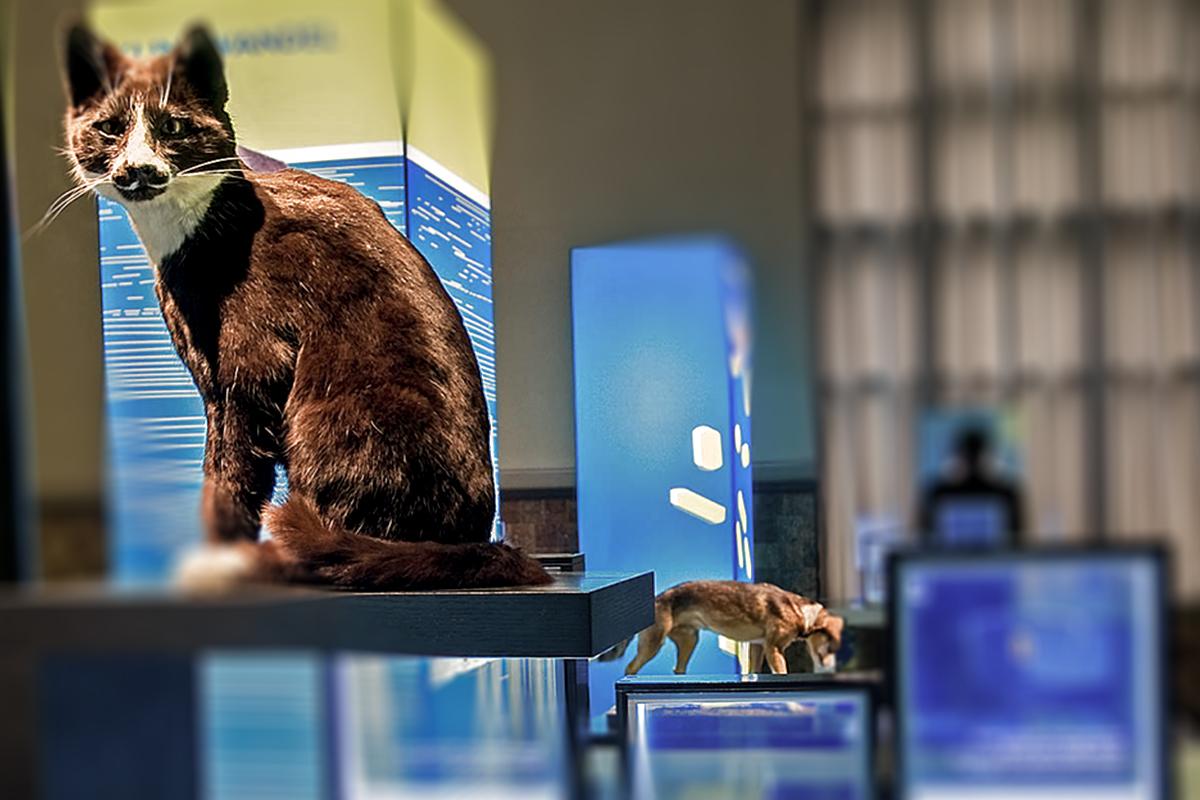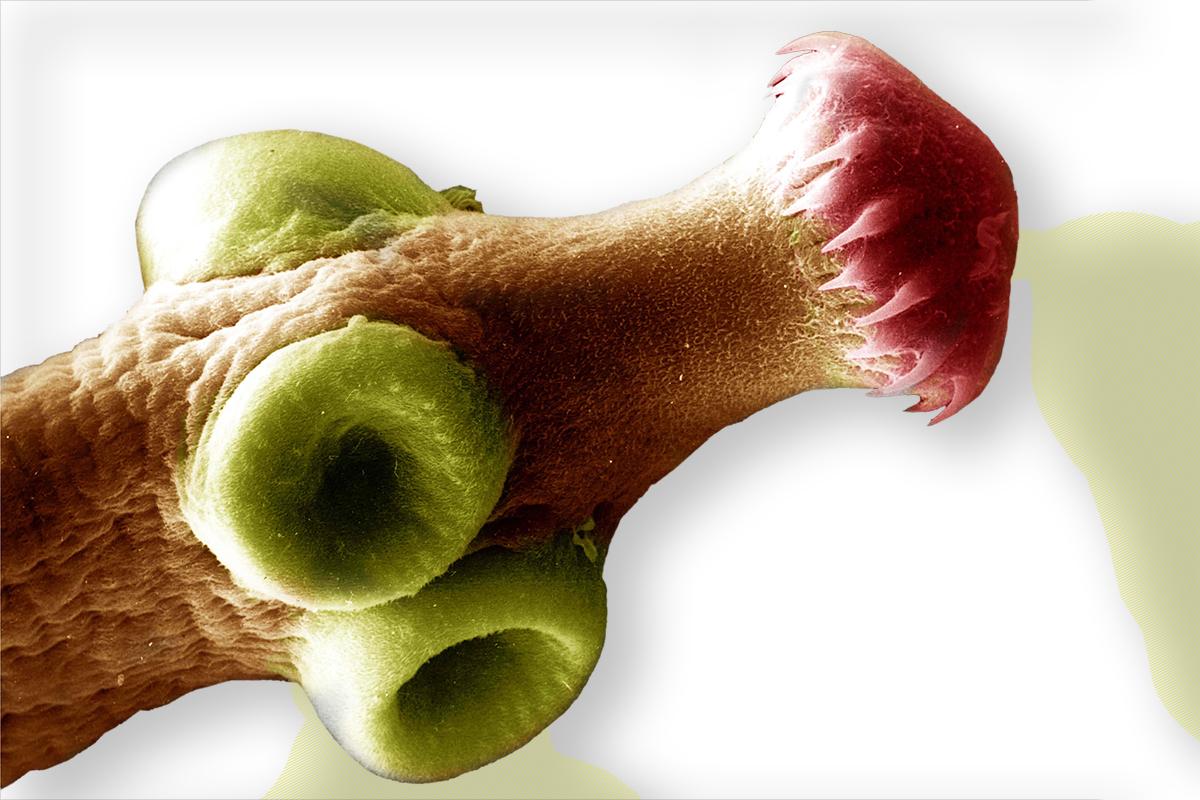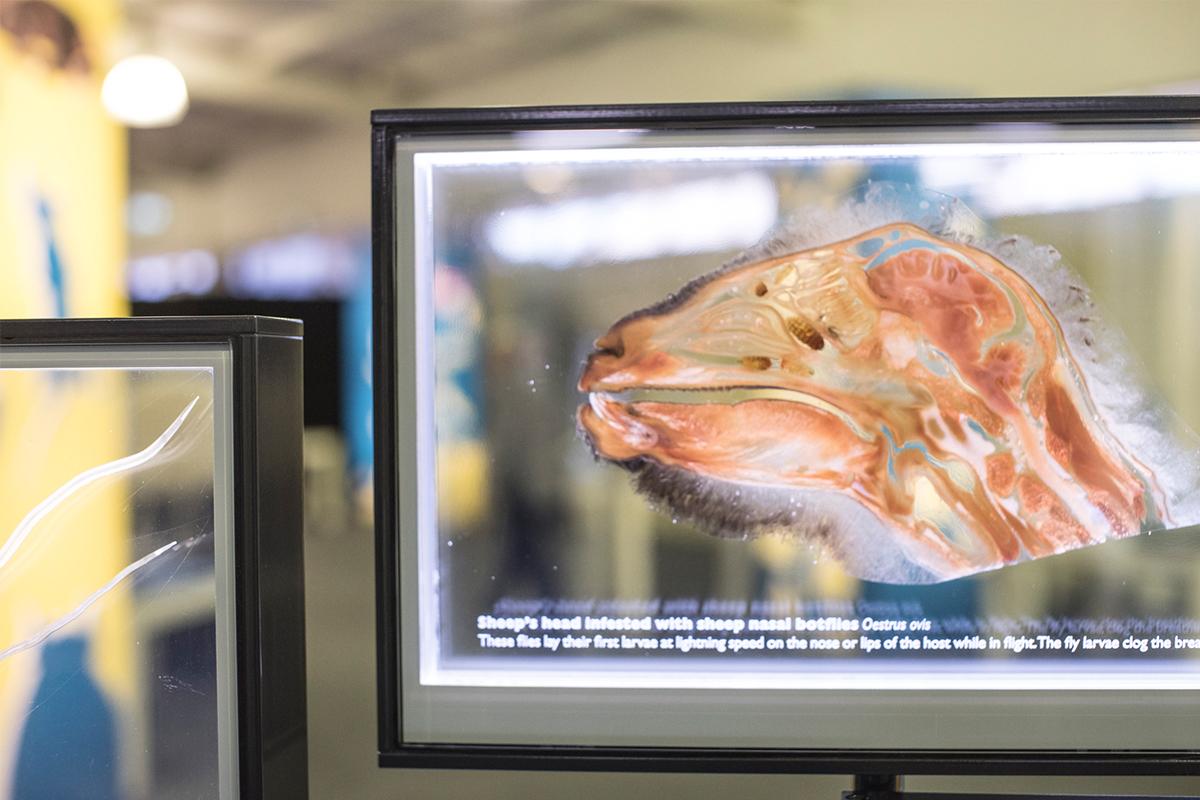
Pets can be infested with parasites, which is common knowledge. But can dogs and cats be dangerous to their owners? We have selected three stories that will give an answer, including why livestock infestation can have economic consequences.
Toxoplasmosis – the Human as Host

Cats are hosts of various parasites such as fleas, ticks and worms. But also of protozoa such as Toxoplasma gondii. This is of great importance globally since humans can be infected by cat feces or infected pork or mutton that is not cooked sufficiently. In a healthy immune system, a toxoplasmosis infection usually goes unnoticed. But for a weakened immune system it can be life-threatening. For pregnant women that are infected for the first time it can lead to a miscarriage or an abnormality of the fetus.
The pathogen normally circulates between cats (final host) and their prey (intermediate hosts). In intermediate hosts such as rats and mice, toxoplasmosis leads to a perfidious change in behavior. The otherwise hated smell of cat urine suddenly becomes an irresistible attraction. This means that the rodents spend more time closer to cats, which significantly increases the likelihood of being caught. Thus, enhancing the chance of the parasite to find its way into a cat.
Dogs and Humans at Risk

Roundworms, hookworms, and heartworms, whose larvae can also afflict humans, make dogs sick. Sand flies transmit the dangerous leishmaniasis that stray dogs in semi-arid countries often suffer from. Mites cause severe mange. Ticks are feared carriers of Lyme disease and canine babesiosis. The brown dog tick (Rhipicephalus sanguineus) can become a scourge indoors.
The Hyper tapeworm is particularly dangerous for humans. It causes hardly any symptoms in dogs, but in humans, however, the larvae form huge cysts that are potentially fatal. As a consequence, it is recommended that dogs are regularly treated for worms, fleas and ticks.
Parasites and farm animals – economic importance

Parasites have a great economic impact, especially on livestock. They affect the quality and quantity of meat, milk, and wool production as well as the “byproduct” leather. In cattle, the infestation with cattle ticks (Rhipicephalus microplus) can negatively impact meat production: a single cattle tick leads to a loss of 1 g of meat within 21 days. Does not sound like much? A large livestock farm in the USA produces 500,000 young bulls per year. If each animal is infested with just one cattle tick, this results in a meat loss of 8.7 tons or around € 30,000. Parasite infestations among livestock also lead to increased production costs. The parasitized cattle need more feed, require veterinary treatments but produce less. In addition there are also treatment costs.
Sheep and goats are plagued by stomach and intestinal worms, tapeworms, lancet liver fluke, scabies, and other parasites. Toxoplasmosis in sheep often leads to miscarriages. The larvae of the sheep nasal botfly block the airways. The larvae of screwworms are feared because they eat into the living flesh from under the fur and can be fatal. In 2009 in the Netherlands 40,000 goats were culled because of Q fever, a bacteria that can be transmitted by ticks, but also simply by dust onto humans and animals.
Here you get back to the overview.